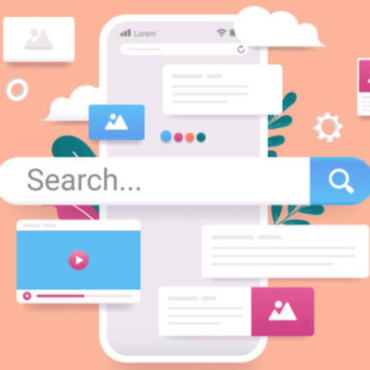Creating compelling call-to-action (CTA) phrases is a vital part of any marketing strategy. Well-crafted CTAs engage your audience, direct them toward a desired outcome, and can significantly increase your conversion rates. But what makes a CTA truly effective? In this article, we’ll explore the qualities of good call-to-action phrases, provide real-world examples, and share tips for crafting CTAs that align with your business goals.
For additional marketing insights, visit Businiverse.
The Power of a Good Call-to-Action Phrase
A call-to-action phrase is much more than just a button or a link. It’s a persuasive element that can guide users to take specific actions like signing up, downloading content, or making a purchase. A well-placed and well-worded CTA is essential because it helps bridge the gap between user interest and user action. Without a strong CTA, your marketing content may lack direction, leaving potential customers unsure about their next steps.
Key Components of Effective Call-to-Action Phrases
To create impactful CTAs, certain elements are critical:
- Clarity
A good CTA is direct and easy to understand. Instead of vague phrases, use clear directives like “Get Started Now” or “Download Your Free Guide.” A concise CTA eliminates confusion and guides the user toward a single action. - Urgency
Adding urgency with words like “Today” or “Limited Time” encourages users to act immediately. Creating a sense of urgency can drive conversions by making the action feel time-sensitive. - Benefit-Oriented Language
When CTAs are benefit-focused, users are more likely to engage. Instead of just “Sign Up,” try “Get Exclusive Access Now” to emphasize what they gain by clicking. - Conciseness
Keep your CTA short. A brief CTA phrase keeps the focus on the action and minimizes hesitation, especially when paired with a direct visual element like a button.
By refining these elements, your CTAs become essential tools in guiding users through the sales funnel, making them feel empowered to take the next step.
For more digital strategies that convert, visit Businiverse.
Examples of Good Call-to-Action Phrases for Various Purposes
Newsletter Sign-Ups
Capturing leads through a newsletter CTA can be more effective when it’s benefit-focused. Rather than a simple “Sign Up,” try phrases like “Join Our Community for Exclusive Tips” or “Stay Updated with the Latest Insights.” These CTAs convey what users will gain from subscribing.
E-commerce and Sales
Sales-oriented CTAs should be engaging and enticing. Phrases like “Unlock Your Discount” or “Shop the Collection” go beyond the basic “Buy Now,” giving users a clear reason to act immediately.
Free Trials or Demos
Letting users experience your product before buying can reduce hesitation. Effective CTAs for trials include “Start Your Free Trial Today” or “See Our Product in Action.” By offering a no-commitment entry point, users feel more inclined to engage.
Content Downloads
For downloadable content such as guides or eBooks, make the value clear. Instead of a generic “Download Now,” use “Get Your Free Guide to Boost Sales.” This type of CTA speaks directly to the benefit of the content.
Personalizing Call-to-Action Phrases for Your Audience
Customizing your CTA for your specific audience can enhance engagement. Here are some ways to tailor CTA phrases effectively:
- Identify Your Audience’s Needs: Understanding your target audience’s primary motivations can help in crafting CTAs that resonate deeply.
- Use Relatable Language: Speak to users in a tone they understand and appreciate. Avoid industry jargon that might confuse or alienate them.
- Add Personalization: Personalized CTAs, like “Your Path to Success Starts Here,” create a sense of exclusivity, making users feel that the CTA is designed specifically for them.
Learn more about audience-specific marketing tactics on Businiverse.
Common Mistakes to Avoid in CTA Phrasing
Creating effective CTAs requires avoiding common pitfalls:
- Being Overly Aggressive
While urgency is useful, phrases like “Act Now or Miss Out!” may create unnecessary pressure, potentially discouraging users. Instead, use a balanced sense of urgency with softer language. - Using Generic Wording
Phrases like “Submit” lack personality. More inviting phrases, like “Get My Free Guide,” can improve response rates by focusing on what the user gains. - Including Multiple CTAs
Too many CTAs can dilute the message and confuse users. Stick to one main CTA on each page to direct users’ focus effectively.
Avoiding these errors can help create a CTA that feels natural, guiding users to engage rather than pressuring them.
Testing and Optimizing Your Call-to-Action Phrases
Once you’ve crafted your CTAs, testing them for effectiveness is crucial. Here are some methods to refine your CTAs:
- A/B Testing: Testing different versions of your CTA can reveal what resonates best with your audience. Experiment with variations in wording, color, or placement to determine the most effective combination.
- Heatmaps and Click Tracking: Tools like heatmaps can show where users are clicking the most on your page, helping to determine if your CTA placement is effective.
- Track Conversion Metrics: Consistently tracking the performance of your CTA can help identify areas for improvement. If conversion rates are low, consider refining the language or testing new designs.
Optimizing your CTA is an ongoing process, but with consistent testing, you can develop calls to action that truly resonate with your audience.
Conclusion
Good call-to-action phrases are essential for turning potential customers into loyal clients. From clear and engaging language to benefits-oriented messaging, CTAs play a critical role in your marketing success. Avoid common mistakes, test regularly, and always focus on the audience’s perspective to create CTAs that encourage genuine engagement.




